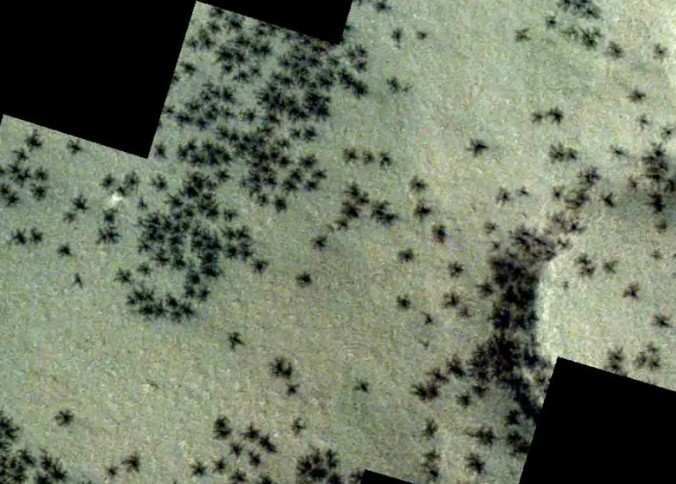Madrid, 16 (European Press)
The European Space Agency’s TGO Exomars orbiter has discovered large amounts of water in an area like the Netherlands in the heart of Mars’ great valley system, Valles Marineris.
The water, hidden beneath the surface of Mars, was found by the Trace Gas Orbiter (TGO) FREND instrument, which maps hydrogen, a measure of water content, to the highest meter from Earth on Mars.
While water is known to exist on Mars, most of it is found in the cold polar regions of the planet in the form of ice. Water ice is not exposed at the surface near the equator, as temperatures here are not cold enough for exposed water ice to stabilize.
Missions, including ESA’s Mars Express, have searched for near-surface water, such as ice covering dust grains on Earth or encased in minerals, at low latitudes on Mars, and found small amounts. However, these studies have only explored the surface of the planet itself; There may be deep water tanks covered with dust.
“Using TGO, we can look up to a meter below this layer of dust and see what’s really going on beneath the surface of Mars, and most importantly, identify water-rich ‘oases’ undetectable with previous instruments.” Igor Mitrofanov, of the Space Research Institute of the Russian Academy of Sciences and lead author of the new study, said in a statement.
“FREND has revealed a region with an unusually high amount of hydrogen in the massive Valles Marineris Valley system: assuming that the hydrogen we see is bound to water molecules, it appears that up to 40% of the near-surface material in this region is water.” It is to explain.
The water-rich region is roughly the size of the Netherlands and overlaps the deep valleys of Candor Chaos, part of the valley system that bodes well for our search for water on Mars.
Mitrofanov and colleagues analyzed FREND observations from May 2018 to February 2021, which determined the hydrogen content in Martian soil by detecting neutrons rather than light.
“Neutrons are produced when high-energy particles known as ‘galactic cosmic rays’ collide with Mars; drier soils emit more neutrons than wetter ones, so we can infer how much water is in the soil by looking at the neutrons they emit” author Alexei Malakhov, Also from the Space Research Institute of the Russian Academy of Sciences. “FREND’s unique observational technology provides much higher spatial resolution than previous measurements of this type, now allowing us to see water features we hadn’t seen before. *LIKE PERMAFROST*” We found that a central part of Valles Marineris was filled with water, much more water than we expected. This is very similar to permafrost regions on Earth, where water ice persists permanently under dry soil due to the constant low temperatures. “
This water can be in the form of ice or water that is chemically bound to other minerals in the soil. However, other observations tell us that minerals in this part of Mars usually contain only a small percentage of water, much less than these new observations show. “In general, we think that this water is most likely to exist as ice,” Alexey says.
Water ice generally evaporates in this region of Mars due to temperature and pressure conditions near the equator. The same goes for chemically bound water: the right combination of temperature, pressure, and hydration must be in place to prevent minerals from losing water. This indicates that in Valles Marineris there must be a special mixture of conditions that are still not clear to conserve water, or it is being replenished in some way.
“This finding is a great first step, but we need more observations to know for sure what kind of water we’re treating,” adds study co-author Häkan Svedem, of ESA’s ESTEC in the Netherlands.
“Regardless of the outcome, the discovery demonstrates the unparalleled capabilities of TGO instruments to allow us to ‘see’ beneath the surface of Mars, revealing a large, not very deep and easily exploitable water reservoir in this region of Mars.”

“Social media evangelist. Student. Reader. Troublemaker. Typical introvert.”

:quality(70):focal(917x454:927x464)/cloudfront-us-east-1.images.arcpublishing.com/elfinanciero/IK6YWCPEYFBRRFEKOPGFRQXC54.jpg)





More Stories
The College of Humanities, Social and Educational Sciences celebrates the graduation of 397 male and female students
Japanese ancestral ritual that is an effective and quick cleaning method: in 15 minutes organize your home and help emotional well-being
The City of Arts and Sciences of Valencia presents the first public exhibition of Pablo Achugarry in Spain